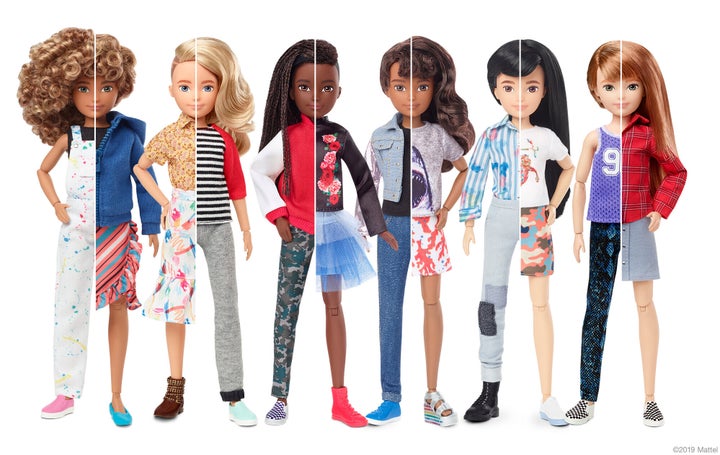In 1959, the American toy company Mattel, Inc. launched a thin, blonde, porcelain-skinned, hourglass-figured fashion doll, who wore a swimsuit and high heels, that would fundamentally change the way people thought about gender, about beauty, and about their bodies.
This week, the pendulum swings the other way: the same company that created Barbie just released a customizable line of gender-inclusive dolls.
The new doll line is called “Creatable World,” and consists of six kits, available in a variety of skin tones. Each kit ($39.99 CAD) comes equipped with one doll, two hairstyle options (one longer, one shorter), accessories, and extensive wardrobe options.

There are sneakers and wedges, tutus and camo pants, long hair and short hair. The point is in the potential — the doll can be a boy, girl, neither, or both — and Mattel has billed it as the world’s first gender-neutral doll: “A doll line designed to keep labels out and invite everyone in.”
“Toys are a reflection of culture, and as the world continues to celebrate the positive impact of inclusivity, we felt it was time to create a doll line free of labels,” Kim Culmone, senior vice president of Mattel Fashion Doll Design, said in a press release.
“This line allows all kids to express themselves freely, which is why it resonates so strongly with them.”
The idea to offer this freedom was born from research the Mattel company conducted firsthand, which found that kids didn’t want their toys to be dictated by gender.
The same, to be sure, can be said for parents: a Fawcett Society study, from earlier this year, found six in 10 parents thought the ways toys are marketed “reinforces stereotypes about what girls and boys can do.” Another recent study found that 63 per cent of Canadian millennial parents are raising their kids to be more gender-neutral.
It has also been widely reported that Generation Z is representative of a major social attitude shift, and that they are far more open-minded and permissive than previous generations when it comes to issues of gender and sexuality.

A Pew Research Center study found almost 60 per cent of those aged 13 to 21 believe forms that ask about gender should include options besides “man” or “woman,” and another 35 per cent know someone who uses gender-neutral pronouns.
“Identity is something that can change, like politics,” one 17-year-old senior said in an interview for a New York Times Generation Z feature earlier this year. “That’s a belief shared by a lot of my generation.”
Toy manufacturing companies and third-party sellers have responded to and capitalized on the shift. Disney removed “boys” and “girls” labels from its children’s costumes, for instance.
And it’s not just gender: plenty of manufacturers, including Mattel, have started making plus-sized dolls and dolls with disabilities.
And it all started a few years ago by parents who began voicing their concerns that there wasn’t enough diversity in the toy aisle, prompting people like Joao Stanganelli Junior and Amy Jandrisevits to take things into their own hands.
Mattel maintains, though, that it has no interest in using the dolls as a statement. “We’re not in the business of politics,” company president Richard Dickson told Time Magazine, in response to complaints that Mattel was pushing an agenda.
“We respect the decision any parent makes around how they raise their kids. Our job is to stimulate imaginations. Our toys are ultimately canvases for cultural conversation, but it’s your conversation, not ours; your opinion, not ours.”